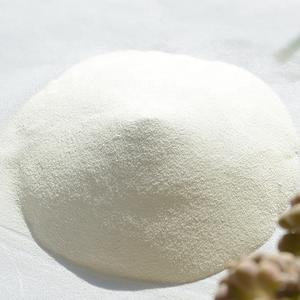1. Introduction
In the past 48 hours, a viral TikTok video reignited public concern about sodium lauryl sulfate (SLS) in everyday shampoos and toothpastes, claiming it causes skin irritation and environmental harm. While the U.S. FDA maintains that SLS is safe at regulated levels, many consumers are now actively seeking gentler alternatives. If you’re wondering how to identify, compare, and safely replace SLS in your products—whether for personal care or even agricultural use—this guide is for you.

Sodium lauryl sulfate (also known as sodium dodecyl sulfate, SLS, or natrium lauryl sulfate) is a powerful anionic surfactant widely used for its foaming and cleansing abilities. But its harshness has led to a surge in demand for milder options like alkyl polyglucoside, coco betaine, and bio surfactants. This article walks you through practical steps to make informed choices.
2. Understand What Sodium Lauryl Sulfate Really Is
Sodium lauryl sulfate (SLS) is an anionic surfactant derived from lauryl alcohol (often from coconut or palm kernel oil). Its job is to lower surface tension, helping water mix with oil and dirt so they can be rinsed away. That’s the meaning of surfactant: a surface-active agent that emulsifies, foams, or wets.
Despite common confusion, SLS is not the same as sodium laureth sulfate (also called sodium lauryl ether sulfate or sodium lauryl ether sulphate). The latter is ethoxylated—meaning it’s been treated with ethylene oxide—which makes it milder. Labels may say ‘sls sodium laureth sulfate’ or ‘laureth sulphate,’ but these refer to different chemicals.
3. Why Replace SLS? Common Problems and Concerns
Many people experience dryness, redness, or itching from products containing SLS, especially those with sensitive skin or conditions like eczema. Others avoid it due to environmental concerns—SLS can be toxic to aquatic life in high concentrations.
Additionally, SLS is often confused with other surfactants like ammonium lauryl sulfate, sodium dodecylbenzene sulfonate, or even cetyl trimethyl ammonium bromide (a cationic surfactant). Knowing the difference between anionic, cationic, non-ionic, and amphoteric surfactants is key to choosing the right alternative.

- Anionic surfactants (like SLS, sodium coco sulfate, sodium lauroyl sarcosinate) are strong cleaners but can be irritating.
- Cationic surfactants (like cetyltrimethylammonium bromide) are used in conditioners for their anti-static properties.
- Nonionic surfactants (like polysorbate 80, Span80, or ethoxylated alcohol) are mild and often used in herbicides as wetting agents.
- Amphoteric surfactants (like cocamidopropyl betaine or amidopropyl betaine) work well with other surfactants and reduce irritation.
4. Step-by-Step Guide to Choosing SLS Alternatives
Step 1: Identify your use case. Are you formulating a shampoo, a facial cleanser, or a weed killer? For personal care, prioritize skin-friendly options. For agriculture, look for surfactant for herbicides like lignin sulfonate or methylated seed oil.
Step 2: Look for gentle anionic or amphoteric replacements. Sodium cocoyl isethionate, sodium lauroyl methyl isethionate, and sodium cocoyl glutamate are excellent mild anionic options. For foam boosting without irritation, choose cocamidopropyl betaine (also labeled as coco amido propyl betaine or coco betaine).
Step 3: Consider non-ionic or bio-based surfactants. Decyl glucoside, coco glucoside, and alkyl polyglucoside are plant-derived, biodegradable, and non-irritating—ideal for ‘sulfate-free’ claims.
Step 4: Avoid misleading labels. ‘SLS-free’ doesn’t always mean gentle. Some products replace SLS with sodium laureth sulfate (SLES), which is milder but still a sulfate. True alternatives avoid both SLS and SLES.
5. Practical Tips for DIY and Commercial Use

If you’re mixing your own herbicide, add 1–2 teaspoons of a nonionic surfactant like polysorbate 80 or a lawn wetting agent per gallon of water to help the solution stick to waxy weed leaves. Never use SLS sodium lauryl sulfate in garden sprays—it can damage plants.
For homemade shampoos, combine sodium coco sulfate (a milder cousin of SLS) with cocamidopropyl betaine and decyl glucoside for rich lather without stripping natural oils. Avoid pairing anionic and cationic surfactants—they can neutralize each other.
When buying ‘sodium lauryl sulfate for sale’ online, verify purity and intended use. Industrial-grade SLS isn’t suitable for cosmetics. Reputable suppliers like Rohit Surfactants Private Limited offer cosmetic-grade options with proper documentation.
6. Common Mistakes to Avoid
Don’t assume all ‘natural’ surfactants are safe—some bio surfactants can still cause allergies. Always patch-test new products.
Don’t confuse sodium lauryl sulfate with sodium deoxycholate or sodium oleate—these are bile salts and soaps, not typical cleansing surfactants.
Avoid using fluoro surfactants or copper 1 bromide in home formulations—they’re industrial chemicals with high toxicity.
7. Conclusion
Replacing sodium lauryl sulfate doesn’t mean sacrificing performance. With the right knowledge, you can choose effective, gentle alternatives like alkyl polyglucoside, cocamidopropyl betaine, or sodium cocoyl isethionate—whether you’re caring for your skin or your lawn. Always read labels, understand surfactant types, and match the ingredient to your specific need. Your skin (and the environment) will thank you.
Our Website founded on October 17, 2012, is a high-tech enterprise committed to the research and development, production, processing, sales and technical services of ceramic relative materials such as How. Our products includes but not limited to Boron Carbide Ceramic Products, Boron Nitride Ceramic Products, Silicon Carbide Ceramic Products, Silicon Nitride Ceramic Products, Zirconium Dioxide Ceramic Products, etc. If you are interested, please feel free to contact us.


